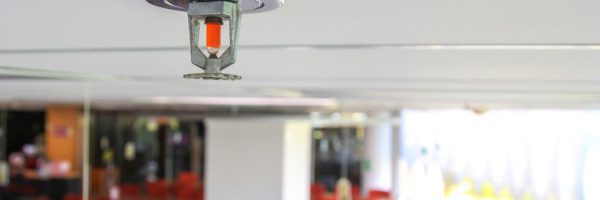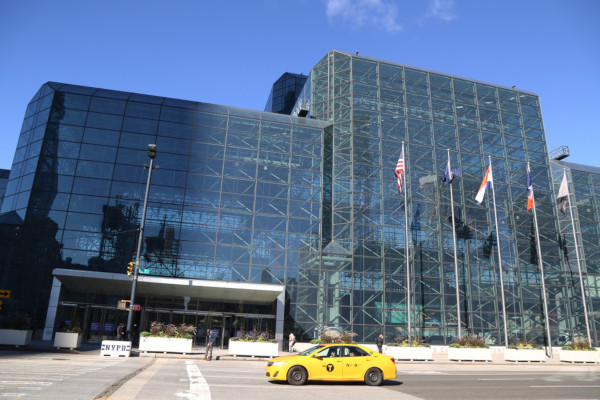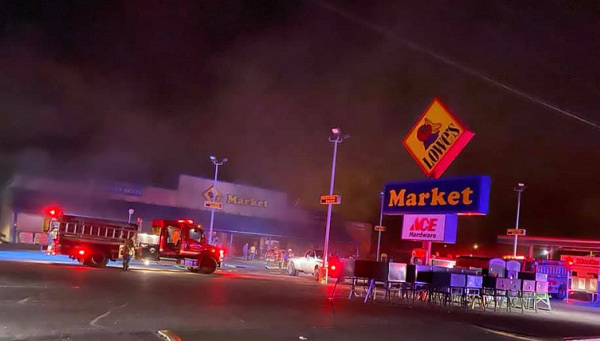Returning to Work After Covid-19: A Guide for Fire Sprinkler Contractors, Part 1

What fire sprinkler contractors need to know to navigate the post-pandemic reality
Hopeful signs are emerging during the COVID-19 pandemic, and the nation’s focus is slowly shifting toward helping businesses recover and restarting the economy. In some parts of the country, fire sprinkler contractors never stopped working at a good pace. But jobs dried up in other areas as sites shut down and financially strapped facilities prioritized other expenses.
Throughout this crisis, the National Fire Sprinkler Association (NFSA) has fought to lay the groundwork that will help the sprinkler industry recover with renewed spirit. And with the end to many pandemic closures in sight, it’s critical to evaluate the framework in place—and what opportunities are arising—to help contractors get back to work.
Be sure to read part two of this series, which looks at the role technology will play in fire sprinkler ITM after lockdowns ease, plus actionable tips for AHJs and fire sprinkler contractors as they return to work.
Coronavirus in the United States: the current situation for the fire sprinkler industry
Before COVID-19, the fire sprinkler industry was booming in the U.S. In 2019, NFSA reported a record number of fire sprinkler head shipments and, for the first time, more than 25% were residential. The sprinkler market in most major metro areas enjoyed double-digit growth, with an average of greater than 6% growth nationwide.
As the pandemic tightened its grip, NFSA reacted swiftly to ensure that states included fire sprinkler contractors on lists of essential workers. Guidance from NFSA, the National Fire Protection Association (NFPA), and other respected thought leaders helped convince governors and other elected officials that fire protection is a vital “critical infrastructure industry” under the Homeland Security Act of 2002.
Neglecting sprinkler system upkeep or failing to install sprinklers in new construction can make the COVID-19 situation worse, stressing emergency response and dramatically increasing the risk of injuries, deaths, and damage from fire.
Fire at an essential business like a grocery store or supplier could devastate a community—and become the final nail on the coffin for an organization struggling to stay afloat. Stay-at-home orders and travel directives have also left many buildings vacant and vulnerable to vandalism and arson.
Some hospitals are crowded with higher numbers of critically ill patients who can’t evacuate quickly during a fire. Other occupancies are facing new and heightened fire risks as they incorporate new uses—transformed into makeshift hospitals or asked to produce different products as part of efforts to battle the virus.
And fire risks are increasing as the pandemic thins some fire department ranks, heightening the need for fire protection systems that work.

Manhattan’s Javits Center was converted into a makeshift hospital during the coronavirus pandemic. Temporary arrangements like these demand fire protection systems that work, regardless of the original occupancy classification.
But as with most national emergencies, different parts of the country have reacted to the crisis in different ways. In some communities, facilities and construction sites remain open with additional precautions, enabling fire sprinkler contractors to largely maintain business as usual. But other areas shut down building departments, offices, construction sites, and manufacturing facilities, bringing operations to a jarring halt.
Even if job sites remain open, it’s not a guarantee that work continues. Some facility managers, concerned about risking exposure to occupants, hesitate to allow contractors inside. Others are scrutinizing every expense as damaged balance sheets make preserving cash a high priority across nearly all industries.
NFSA supports members through the coronavirus pandemic
Until a coronavirus vaccine is found, all organizations face a new reality, even as restrictions ease. NFSA has worked diligently to help ensure that fire sprinkler contractors can hit the ground running as businesses slowly return to work.
NFSA utilized the critical infrastructure guidelines of the Department of Homeland Security (DHS) and Cybersecurity & Infrastructure Security Agency (CISA) to help classify fire sprinkler work as essential. Our guidance helped fire sprinkler contractors, suppliers, and manufacturers navigate state, cross-state, and local requirements to keep working. We reminded legislators of how fire protection services play a vital role in public safety. And we showed how they remain especially important when emergent repairs, outages, or inspection, testing, and maintenance (ITM) are required by fire and building codes to operate critical facilities.
As facility managers struggled to understand if sprinkler ITM conflicted with government stay-at-home orders, some contractors even reported carrying official NFSA letters in their trucks to prove their status as essential workers.
Since the beginning of the pandemic, NFSA has also monitored and evaluated governors’ executive orders for their impact on the fire sprinkler industry in each state. State-by-state pages on our website keep members up-to-date and help them meet local mandates.
NFSA has helped sprinkler businesses navigate the complex state requirements that emerged during the pandemic as well. For instance, our advocacy helped clear up initial confusion over whether sprinkler manufacturers and suppliers could secure the work permits needed to operate as an essential business in Pennsylvania. NFSA then supported them through the process.
NFSA also helped ensure the sprinkler industry could easily transport goods deemed essential in one area from a manufacturer across the country. For instance, residential construction continued during the pandemic in California, which requires the installation of automatic fire sprinkler systems in one- and two-family dwellings. NFSA helped ensure suppliers could provide California builders with the sprinkler products they need in a safe and timely manner, even when interstate transport is required.

NFSA, NFPA, and other advocates acted swiftly to convince elected officials to classify fire sprinkler work as essential—keeping contractors, suppliers, and manufacturers working throughout the crisis.
NFSA also fought to ensure that tax incentives for installing or upgrading fire sprinklers offered by the Coronavirus Aid, Relief, and Economic Security (CARES) Act extended to all commercial buildings. We teamed with other prominent advocacy groups to correct a technical error that only allowed smaller businesses to benefit from tax savings associated with fire sprinklers in the 2017 Tax Cuts and Jobs Act.
Tax incentives that can help generate sprinkler work as the economy recovers couldn’t come at a better time for NFSA members. To learn how you and your clients may benefit from the new CARES Act tax incentive, read our blog: “The CARES Act Delivers New Fire Sprinkler Tax Incentives.”
NFSA continues to advocate to get other active bills passed that would improve fire safety while providing immediate work for our members. Topping that list is the High-Rise Fire Sprinkler Incentive Act, which would make all types of high-rise buildings—including residential—eligible for the accelerated depreciation tax benefit. There is also the Public Housing Fire Safety Act, which would provide $25 million per year for 10 years to retrofit the public housing overseen by the Housing and Urban Development Agency (HUD).
NFSA also remains committed to keeping our members informed about other recent developments related to COVID-19 that could impact their companies. Our website offers resources that can help sprinkler businesses weather the crisis, including valuable information about loans and other supportive programs.
Free online training that provides tools sprinkler businesses need to cope with COVID-19 is also available through NFSA, including “Leading Virtual Teams,” “Coronavirus Precautions and Preventions: Common Sense Hygiene,” and “Handling Stress.” Our regular training classes are discounted up to 50% as well, so workers can use the time they are stuck at home to improve skills, complete continuing education requirements, or achieve gold-standard certifications like NICET.

In the post-pandemic reality, protecting facilities that keep supply chains running smoothly and enable remote work could represent a growth opportunity for fire sprinkler contractors.
New realities may present novel opportunities for fire sprinkler contractors as the COVID-19 crisis recedes
The CARES Act tax incentive isn’t the only hopeful sign that a steady supply of jobs will await sprinkler businesses as the economy re-opens. In fact, despite the pandemic, an April MarketsandMarkets report predicts that the fire protection market will grow by more than 7% every year between 2020 and 2025, reaching $95.4 billion. Fueling that increase are new construction, reactions to tragic fires, a legislative trend toward more stringent fire protection measures, and new fire protection technologies.
The fire suppression segment is expected to capture the biggest market share during the forecast period, according to the report. And the need to maintain these systems will cause ITM services to grow at the highest compounded annual rate.
NFSA agrees that a burgeoning emphasis on the importance of fire sprinkler protection among building owners and legislators will help drive economic recovery in the sprinkler industry. With fewer resources consumed by pandemic emergencies, AHJs should also resume more regular permitting schedules for sprinkler installations and retrofits, as well as regular enforcement of ITM mandated by fire and building codes.
But NFSA leaders believe that the continued need for social distancing until a vaccine is found may create some of the sprinkler industry’s most unique growth opportunities. And that has forward-thinking sprinkler contractors contemplating new ways to market their services.
As companies shift their operating models to incorporate more people working from home, sprinkler contractors are likely to see greater demand for installing and maintaining systems at facilities that enable remote work. For instance, that’s likely to mean more of an emphasis on protecting the large data, distribution, storage, and transportation centers that deliver products and services to people working at home. And it could mean less of a focus on smaller offices or retail centers as small business owners work remotely—and the pandemic forces some companies out of business altogether.

In March, fire gutted the only grocery store in San Saba, Tex., devastating a community already struggling to keep pantries stocked with essential goods. Source: Brownwood News
NFSA also expects an emphasis on protecting facilities that keep supply chains running to avoid product shortages and prolonged delivery delays. In May, the country has faced meat shortages after coronavirus triggered the closure of several production facilities. U.S. beef and pork processing capacity dropped by 40% from 2019.
A devastating fire at a critical supply chain facility could cause similar disruption. In 2018, NFPA reported that fires caused $25.6 billion in direct property damage in the U.S., and structures without working sprinklers typically suffer between 45% and 70% more losses.
After a March 20 fire left the only full-service grocery store in San Saba, Tex., a pile of ash, residents already struggling to find essential goods amidst COVID-19 shortages had nowhere to shop for fresh produce and meat.
Another growth area for sprinkler contractors may come from changing office configurations, as property owners consider ways to incorporate social distancing into existing buildings. From Wall Street to Main Street USA, companies are scrambling for ways to make workplaces less of a health risk.
Many experts are predicting that might mean the end of the modern open-floor workplace. While the dot-com boom of the 1990s made open floor plans synonymous with collaboration and creativity, the pandemic is raising concerns that people returning to shared desks will spread the virus. About 16% of flu transmissions take place in office environments—and evidence points to coronavirus being even more contagious.
As shutdowns ease, The New York Times reported increasing numbers of business owners hiring design and furniture companies to shift their offices back to the days of high-walled cubicles and individual office spaces. Not surprisingly, NFSA members have also reported inquiries from customers like real estate investment trusts (REITs) about adjusting sprinkler system configurations to provide adequate coverage as floor plans change.
Fire sprinkler contractors will get through this crisis
The pandemic has dealt a blow to many organizations, but NFSA is committed to helping the fire sprinkler industry recover and thrive. Knowing what resources and support are available—and navigating the new landscape until a vaccine is found—can help fire sprinkler contractors emerge from the crisis with fresh energy and opportunity.
In our next installment of Returning to Work After Covid-19, we’ll take a look at the role technology will play in fire sprinkler ITM, including automated inspection and testing, video inspections, and digital ITM tools. We’ll also provide actionable safety tips for fire sprinkler contractors returning to job sites, and guidance on what AHJs can do to maintain codes while speeding the industry’s recovery.
In the meantime, please continue to monitor and follow recommendations from the World Health Organization (WHO), CDC, and OSHA, as well as guidance and orders from federal, state, and local governments. You can also keep an eye on NFSA’s COVID-19 response page for the latest developments that impact the sprinkler industry.
And, of course, our members should continue to reach out to NFSA via our website or by calling 443-863-4464 for answers and support as the world re-opens. Not an NFSA member? Join today!
For over a century, the National Fire Sprinkler Association (NFSA) has served as the voice of the fire sprinkler industry. Our mission: advocating to protect lives and property through the widespread acceptance of the fire sprinkler concept. To join NFSA or learn more about the ways membership can benefit your organization, visit nfsa.org/join.
